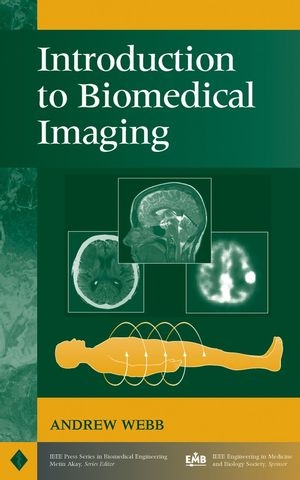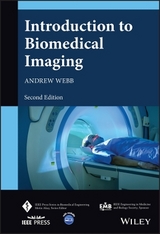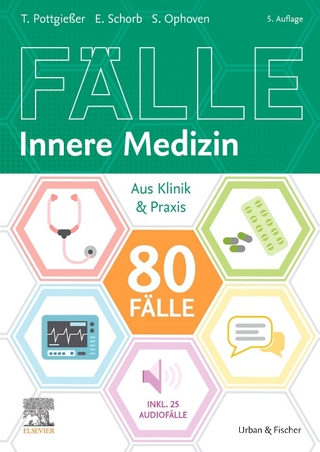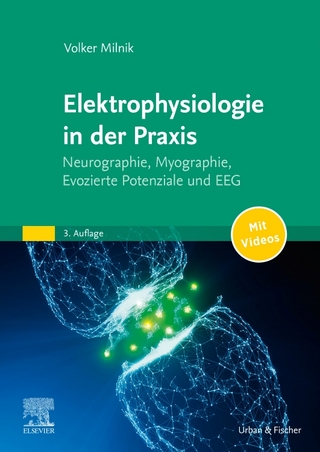
Introduction to Biomedical Imaging
John Wiley & Sons Inc (Verlag)
978-0-471-23766-2 (ISBN)
- Titel erscheint in neuer Auflage
- Artikel merken
Taking an accessible approach that includes any necessary mathematics and transform methods, this book provides rigorous discussions of:* The physical principles, instrumental design, data acquisition strategies, image reconstruction techniques, and clinical applications of each modality* Recent developments such as multi-slice spiral computed tomography, harmonic and sub-harmonic ultrasonic imaging, multi-slice PET scanning, and functional magnetic resonance imaging* General image characteristics such as spatial resolution and signal-to-noise, common to all of the imaging modalities
ANDREW WEBB, PhD, is a faculty member in the Department of Electrical and Computer Engineering and the Beckman Institute for Advanced Science and Technology at the University of Illinois at Urbana-Champaign. Dr. Webb has contributed to many areas of magnetic resonance imaging including developments in radiofrequency coil design, feedback control of thermal processes, techniques for localized spectroscopy, and functional brain mapping. He was awarded a Whitaker Foundation Research Award and a National Science Foundation Career Award in 1997, a Wolfgang-Paul Prize from the Alexander von Humbolt Foundation in 2001, and Xerox and Willett awards for young faculty in 2002. He is a Senior Member of the IEEE.
Preface. Acknowledgments. 1. X-Ray Imaging and Computed Tomography. 1.1 General Principles of Imaging with X-Rays. 1.2 X-Ray Production. 1.3 Interactions of X-Rays with Tissue. 1.4 Linear and Mass Attenuation Coefficients of X-Rays in Tissue. 1.5 Instrumentation for Planar X-Ray Imaging. 1.6 X-Ray Image Characteristics. 1.7 X-Ray Contrast Agents. 1.8 X-Ray Imaging Methods. 1.9 Clinical Applications of X-Ray Imaging. 1.10 Computed Tomography. 1.11 Image Processing for Computed Tomography. 1.12 Spiral/Helical Computed Tomography. 1.13 Multislice Spiral Computed Tomography. 1.14 Radiation Dose. 1.15 Clinical Applications of Computed Tomography. 2. Nuclear Medicine. 2.1 General Principles of Nuclear Medicine. 2.2 Radioactivity. 2.3 The Production of Radionuclides. 2.4 Types of Radioactive Decay. 2.5 The Technetium Generator. 2.6 The Biodistribution of Technetium-Based Agents within the Body. 2.7 Instrumentation: The Gamma Camera. 2.8 Image Characteristics. 2.9 Single Photon Emission Computed Tomography. 2.10 Clinical Applications of Nuclear Medicine. 2.11 Positron Emission Tomography. 3. Ultrasonic Imaging. 3.1 General Principles of Ultrasonic Imaging. 3.2 Wave Propagation and Characteristic Acoustic Impedance. 3.3 Wave Reflection and Refraction. 3.4 Energy Loss Mechanisms in Tissue. 3.5 Instrumentation. 3.6 Diagnostic Scanning Modes. 3.7 Artifacts in Ultrasonic Imaging. 3.8 Image Characteristics. 3.9 Compound Imaging. 3.10 Blood Velocity Measurements Using Ultrasound. 3.11 Ultrasound Contrast Agents, Harmonic Imaging, and Pulse Inversion Techniques. 3.12 Safety and Bioeffects in Ultrasonic Imaging. 3.13 Clinical Applications of Ultrasound. 4. Magnetic Resonance Imaging. 4.1 General Principles of Magnetic Resonance Imaging. 4.2 Nuclear Magnetism. 4.3 Magnetic Resonance Imaging. 4.4 Instrumentation. 4.5 Imaging Sequences. 4.6 Image Characteristics. 4.7 MRI Contrast Agents. 4.8 Magnetic Resonance Angiography. 4.9 Diffusion-Weighted Imaging. 4.10 In Vivo Localized Spectroscopy. 4.11 Functional MRI. 4.12 Clinical Applications of MRI. 5. General Image Characteristics. 5.1 Introduction. 5.2 Spatial Resolution. 5.3 Signal-to-Noise Ratio. 5.4 Contrast-to-Noise Ratio. 5.5 Image Filtering. 5.6 The Receiver Operating Curve. Appendix A: The Fourier Transform. Appendix B: Backprojection and Filtered Backprojection. Abbreviations. Index.
| Erscheint lt. Verlag | 10.1.2003 |
|---|---|
| Verlagsort | New York |
| Sprache | englisch |
| Maße | 167 x 245 mm |
| Gewicht | 574 g |
| Themenwelt | Medizin / Pharmazie ► Medizinische Fachgebiete ► Radiologie / Bildgebende Verfahren |
| Studium ► 2. Studienabschnitt (Klinik) ► Anamnese / Körperliche Untersuchung | |
| Technik ► Umwelttechnik / Biotechnologie | |
| ISBN-10 | 0-471-23766-3 / 0471237663 |
| ISBN-13 | 978-0-471-23766-2 / 9780471237662 |
| Zustand | Neuware |
| Haben Sie eine Frage zum Produkt? |
aus dem Bereich



